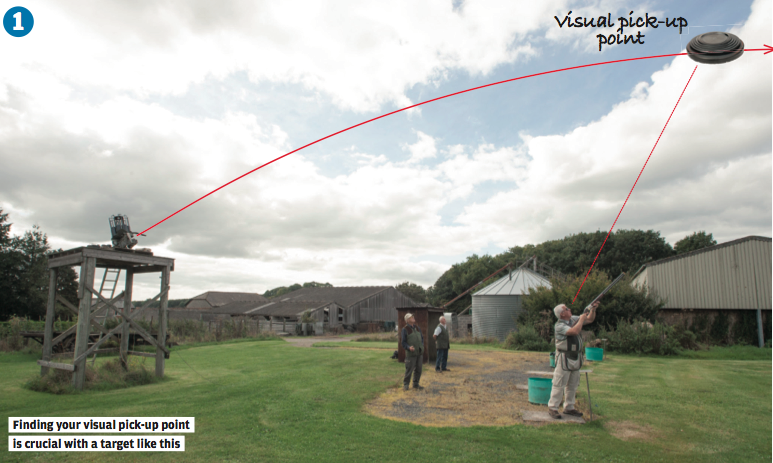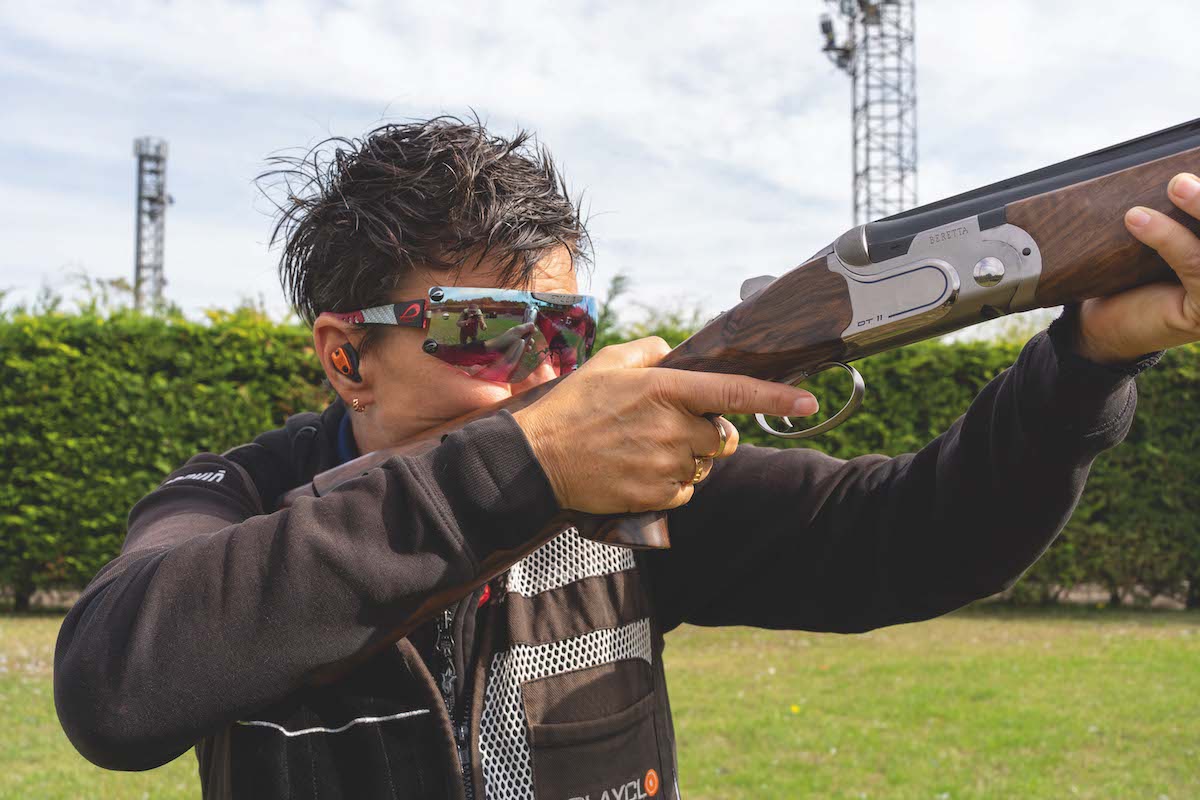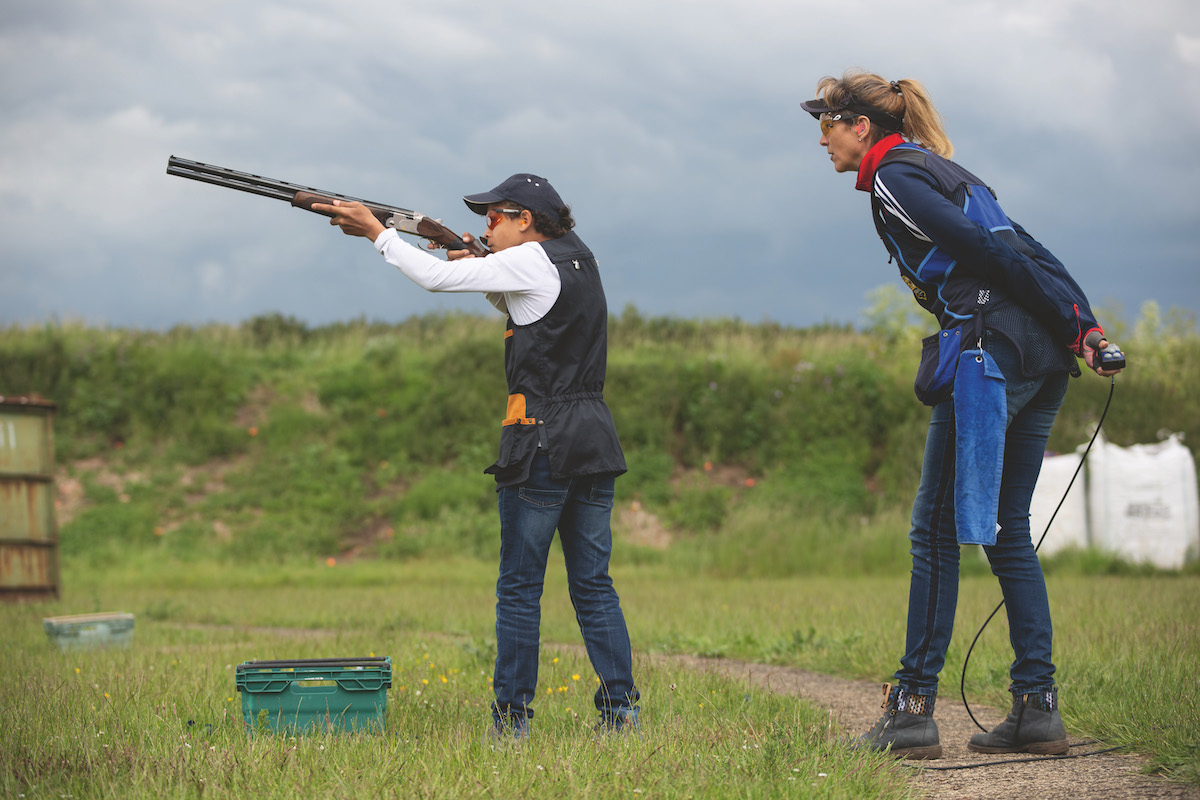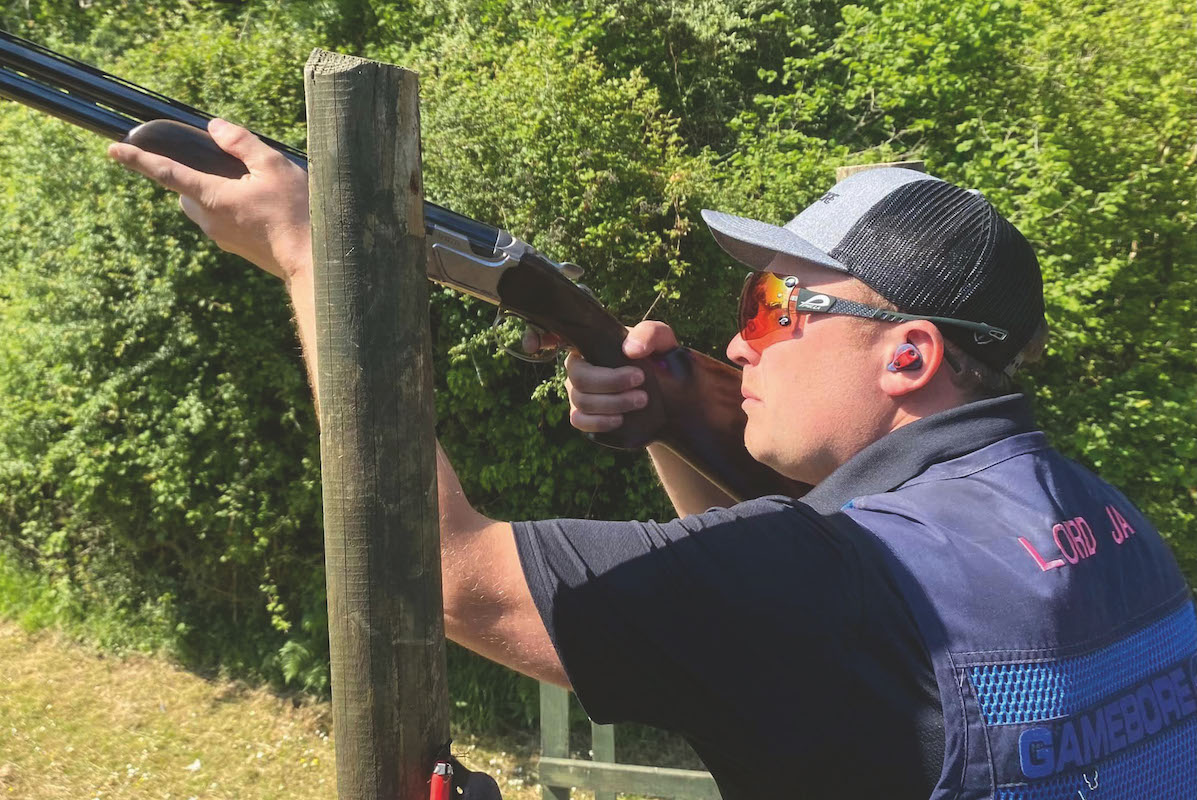A lesson shooting overhead clays from behind
Geoff “Silver Fox” Kelly has been shooting clays for 40 years and prior to that used to do some game and pigeon shooting. Having started with an airgun at the age of seven, his route into the shooting world went down a familiar path that many have taken, beginning with beating on a local shoot.
In 2006, Geoff became a member of the Association of Professional Shooting Instructors (APSI).
We asked him to give clayshooters a masterclass.
The target
The target that Geoff had chosen to look at was an overhead clay from behind – the reversal of an incomer. This target is not only a challenge for the clay shooter, but can also offer a simulation of a woodpigeon hurting over a tall hedge or trees from behind a hide. Geoff said: “Good shooters never look like they are rushing, stance and gun mount are vital but using your vision correctly and finding your visual pick-up point is crucial with a target like this. One of the biggest mistakes that shooters make with this target is to look too far out and to look at the gun too much instead of looking back for the target. By the time the clay flies into view it is already a long way out. The further away you shoot the wider, and less dense, your shot pattern gets. So try and get onto the clay as quickly as possible.

Geoff looks up at the 11 o’clock position to allow for early sight of the clay
Pull away
“For a clay like this I shoot gun down and would normally look up at about the 11 o’clock position. This allows early sight of the clay and gives me valuable time to mount and shoot smoothly. Tilt your head back slightly and as the target appears, looking up, move and mount with it. Don’t let the clay overtake the gun or else you will lose sight of it. As the muzzles touch the leading edge of the clay, squeeze the trigger and follow through to complete the shot – don’t stop when you fire. This is pretty much an instinctive shot so don’t dwell on it. I would shoot this particular target using the CPSA method known as ‘pull away’. My gun would be held further out from my visual pick-up point. We call this the hold point, approximately midway between where I first see the clay clearly and where I intend to take the shot.

As the target appears, looking up, move and mount with it – don’t let it overtake the gun
“As an instructor I have to take into account that everybody is different and that some will be quicker or slower than others and sometimes what may seem like sloppy technique works for some individuals. There are several known methods for shooting clays, they all work and if you are going to be a successful Sporting shooter you need to have a full box of tools to be successful. Changing style and posture can sometimes be the key to success.”










